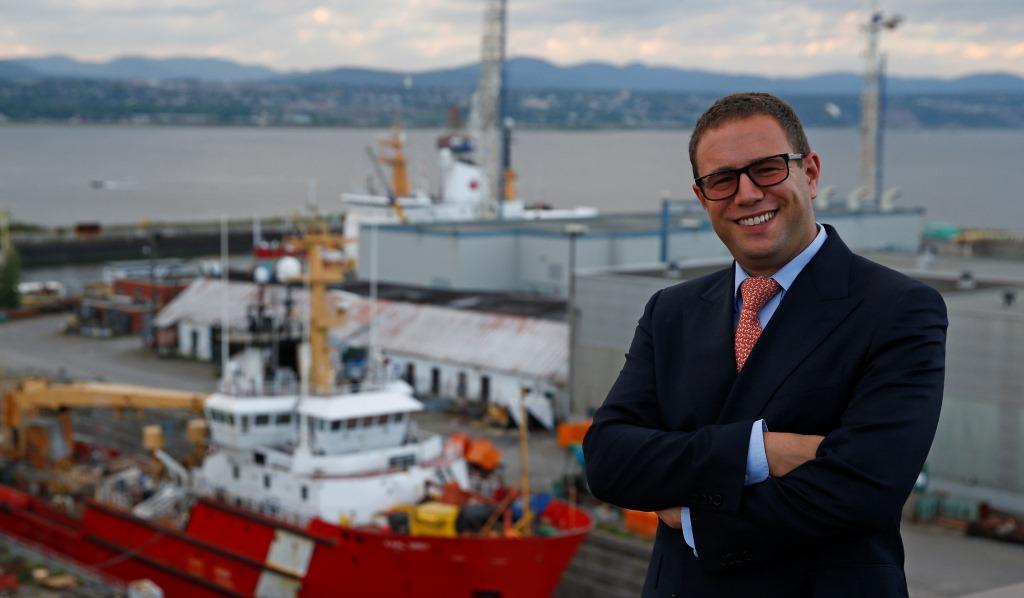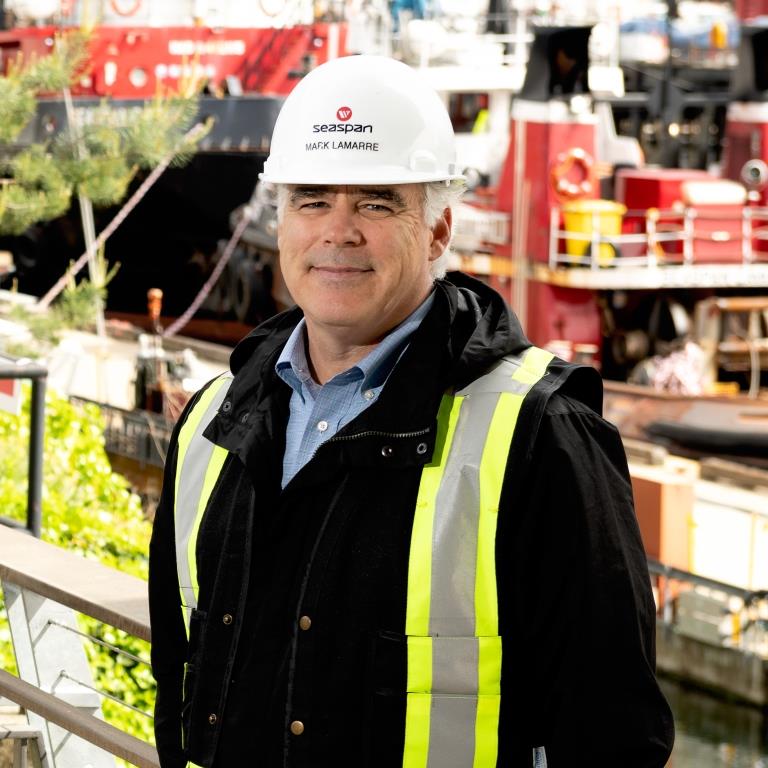SHIPBUILDING COMMENTARY
BY PETER KITCHEN
WHY CANADA MUST STAY THE COURSE
ON ITS NSS COMMITMENT
 Currently the USA is building frigates for its Navy that are very comparable in size and capability to what Canada has contracted Irving Shipbuilding to build for the Royal Canadian Navy under the CSC program. But the big difference is, Canada will pay much more per ship than the US and although the FFG (X) program started much later than CSC, it is much farther along and is expected to begin construction no later than April 2022 with the first ship to be delivered in 2026.
Currently the USA is building frigates for its Navy that are very comparable in size and capability to what Canada has contracted Irving Shipbuilding to build for the Royal Canadian Navy under the CSC program. But the big difference is, Canada will pay much more per ship than the US and although the FFG (X) program started much later than CSC, it is much farther along and is expected to begin construction no later than April 2022 with the first ship to be delivered in 2026.
By the way, the Fincantieri FREMM design selected by the US was bid on CSC but lost out to BAE’s Type 26 Global Combat ship design that Irving is slated to build at its Halifax yard. The new USN frigate will be built at Fincantieri’s yard in Wisconsin.
But this all begs the question, is Canada paying too much for its new navy ships? And, for the answer to that we come back to the NSS (National Shipbuilding Strategy) program that the government set up to avoid the boom and bust cycle that has plagued Canada’s shipbuilding industry for decades.
Remember, it was Saint John Shipbuilding that built most of the Halifax Class frigates now employed by Canada’s Navy and that company is now out of business. All the associated high paying jobs and technology built up over the course of that program are gone forever. When the CPF (Canadian Patrol Frigate) program ended there was no more government work and of course the company could not compete with other low wage countries for off shore work so it was forced to shut its doors.
Canada cannot compete with low cost ship builders from places like China, Taiwan, Korea et al. That is just a fact. So, if we really want to keep a viable shipbuilding industry in this country the government needs to guarantee business for existing shipbuilders like Irving, Seaspan and Davie. And that means awarding not only naval but also CCG (Canadian Coast Guard) work to Canadian shipbuilders where ever possible.
Let’s be honest, while the Canadian taxpayer may be paying more for these ships, thousands of jobs have been saved and more have been created by programs like JSS where Seaspan, on Canada’s West Coast, is engaged in building critically important supply ships for Canada’s Navy. As CDR reported in a recent Cover Story, Seaspan has been able to avoid the boom and bust cycle of past years and is even spending hundreds of millions of dollars on new infrastructure and adding hundreds of new jobs.
Mark Lamarre, CEO of Seaspan, told CDR, “NSS is working exactly as intended … we’ve had challenges …. but there’s no doubt the strategy is succeeding”. And Lamarre says Seaspan has become an economic engine for B.C. and Canada, “…. we’ve become an anchor customer for hundreds of suppliers across the country.” Lamarre concluded, “Canada was wise in putting NSS together…. Shipbuilding is really nation building and our national strategy has momentum, is gaining speed and maturing with every ship delivered.”
WHY BUY USED SHIPS OFFSHORE?
So, with the NSS program apparently now accomplishing what it was set out to do, we wondered why the government is now looking at purchasing a used ship (for the Canadian Coast Guard) from offshore, instead of building this ship right here at home.
CMISA President Colin Cooke, responded to the government’s move this way, “Our members are quite capable of designing, engineering, supplying material and building this ship in Canada where so many Canadians can benefit from this work. A fast track project to build this light icebreaker would be a winning solution for our members, the marine industry, and Canadian taxpayers.”
Cooke asked the question, “Why are federal departments continually allowed to ignore the Government’s shipbuilding policy and buy vessels offshore when CMISA members have the capability to produce this vessel in Canada?”
Cooke’s CMISA industry group complained, “This is the second such procurement that has taken work from our members this past week. On the same day this light icebreaker RFP was published, Transport Canada proudly announced it had procured used tonnage from Europe with another ‘in extremis’ purchase of a large ferry from Spain called the Villa de Terror. We estimate that these two procurements will represent a loss of over 2.5 million person hours of labour and over $250M in material purchases in Canada.”
However, one shipbuilding prize in the coming years will surely be the Polar Icebreaker project. It was mentioned in the federal government’s original NSS plan and targeted for production at Seaspan in Vancouver but because of production delays on the JSS program construction of the Polar Icebreaker was pushed back a number of years.
BUILDING THE POLAR ICEBREAKER
Now, Davie Shipbuilding, which bills itself as Canada’s largest and longest running shipyard, has moved into the picture, offering to build the Polar Icebreaker at its Quebec yard far ahead of the schedule now proposed by Seaspan. And to prove it is serious the company earlier this year opened a National Icebreaker Centre, where the company says, it is developing special technologies that can be applied to icebreakers that it builds at its facility.
Davie says it is, “Canada’s only shipbuilding facility with the capacity, infrastructure and experience to begin work today on the world’s most powerful hybrid diesel-electric polar icebreakers.”
According to Alex Vicefield, CEO and Chairman, Inocea Group, parent company of Davie, “The National Icebreaker Centre is Canada’s polar hub. Building and sustaining Arctic vessels is in our DNA and it’s the challenge we’ve risen to given the physical location of our shipyard. With the launch of the NIC we are proactively developing a centre of excellence for polar technologies. Constructing the entire Canadian polar icebreaker fleet at Davie will ensure program success.”
In fact, Davie has pledged to deliver the first of two polars, the replacement for the CCGS Louis St Laurent, 2.5 years ahead of the current schedule.
But, Seaspan is fighting back and is more determined that ever to build the Polar Icebreaker. As we reported in CDR recently, Seaspan has now partnered with Heddle Shipyards, an Ontario-based shipbuilder who would build modules for the Polar Icebreaker at its yards in Hamilton, St Catherines, Thunder Bay and Mount Pearl and deliver them to Seaspan on the West Coast via ground transport, thus broadening the industrial benefits of the Polar Icebreaker project to include other regions of the country.
Irrespective of who ultimately builds Polar Icebreaker, Canada’s shipbuilding industry is much healthier now than it was when the government instituted its NSS program, so let’s be fair and give credit where credit is due, after all it’s not often that government gets it right.
In the future, we may pay a little more for our Navy and CCG ships but we now have a thriving industry that contributes positively to the national economy and, at the same, time supplies the country with much needed ships for national security.
So, we say let’s not allow a demonstrably successful NSS program to veer off the rails at this critical juncture. Let’s stick to our guns and allow it to make Canada an even better shipbuilding nation!
Peter Kitchen is Editor-in-Chief of CDR magazine

